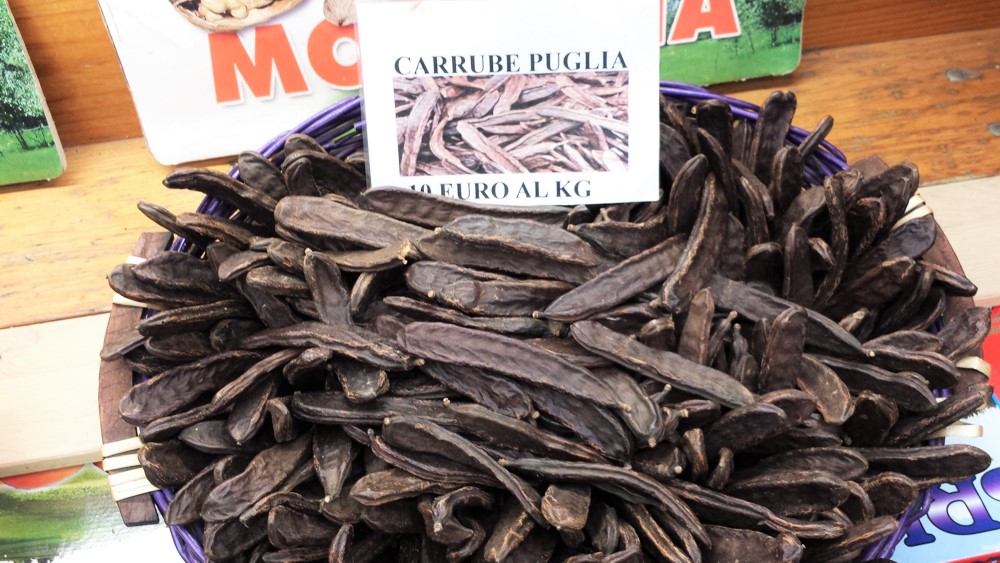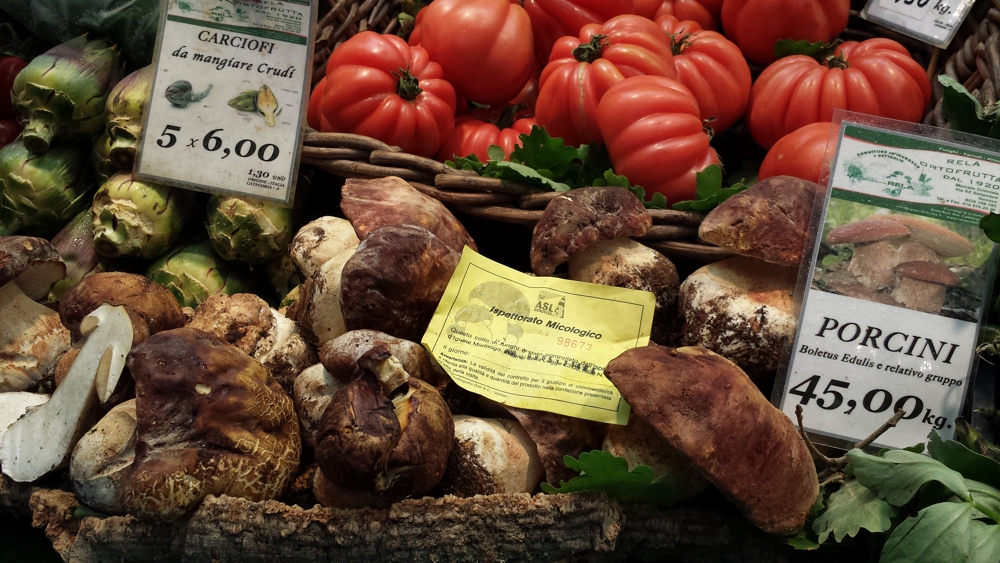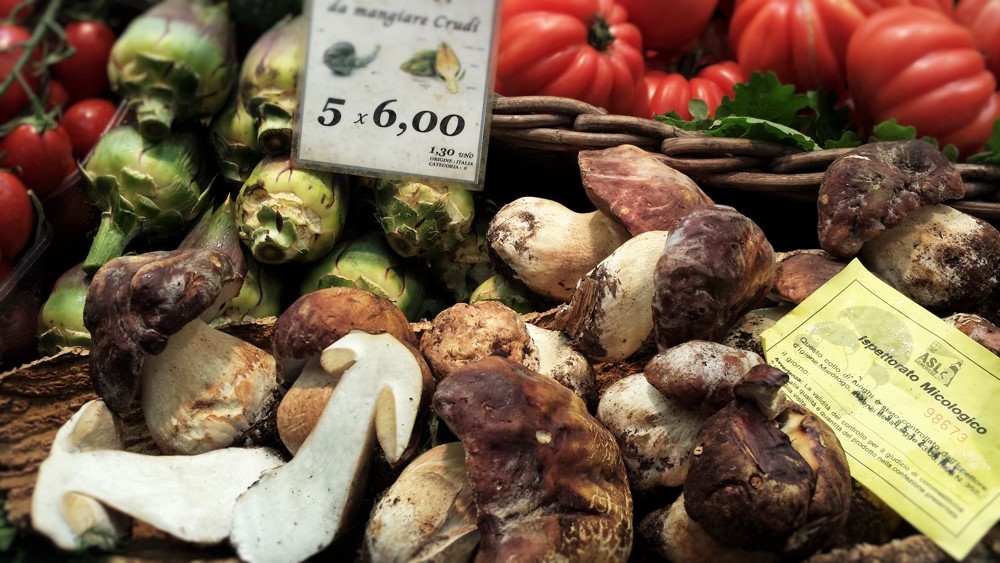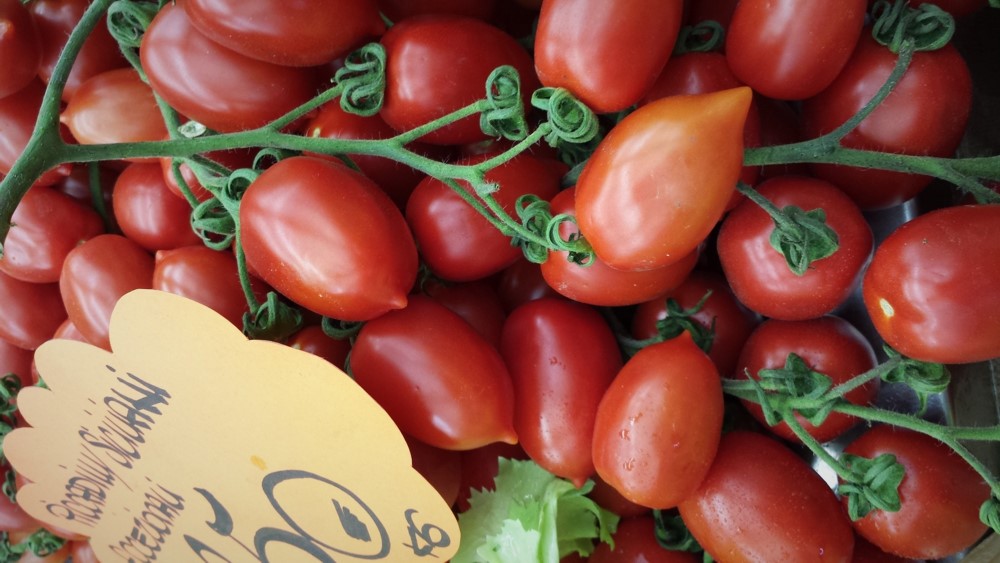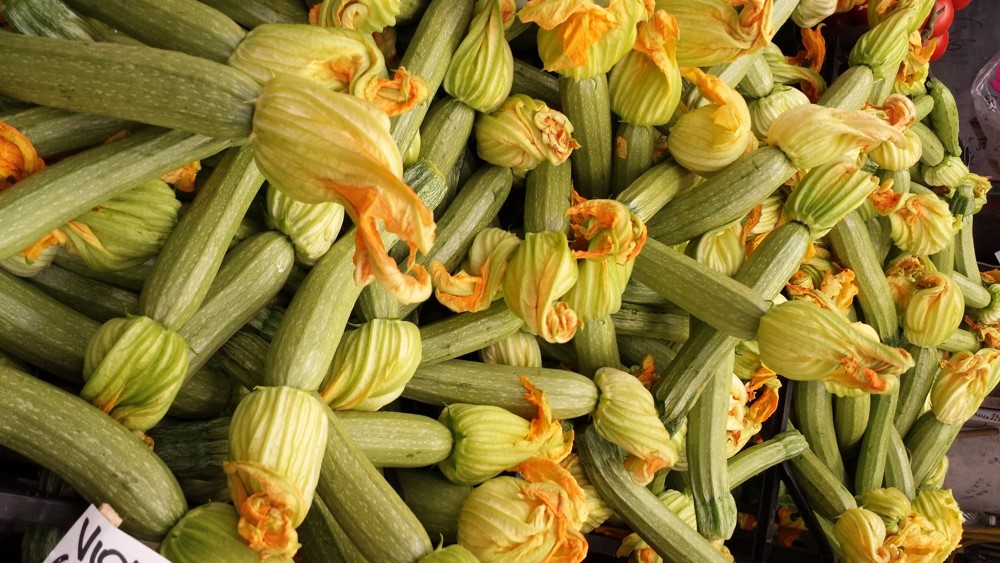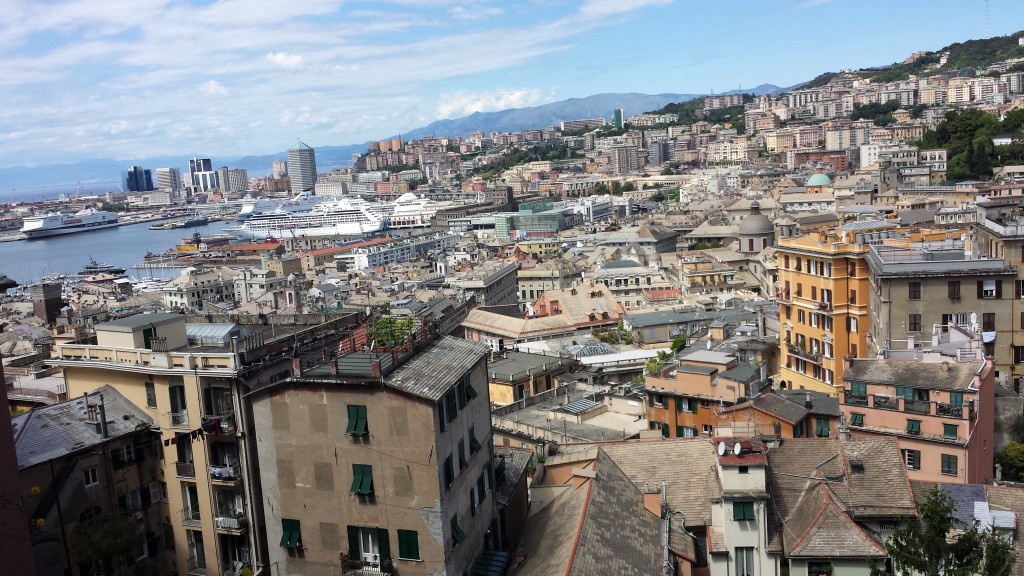Genoa’s alleyways or ‘caruggi’ in the centro storico or historic center spread in an oval from the harbour and aquarium north to Via Garibaldi and the Piazza de Ferrari. This network of caruggi, too narrow for cars, and often even for a sliver of sunlight to pierce through, teems with people all day through. Cafes, wine-bars, trattorias, groceries and bakeries abound, and the aroma emanating from the wood burning stoves in the focaccerie or bakeries mingles with that of fried fish, coffee and more.
The best places to sample street food are of course the little ‘hole in the wall’ places in the caruggi – little shops, open to pedestrians, where wood burning stoves chuff away, glass display cases proudly showcase the latest offerings from the oven, and a half dozen or so of tall stools sit adjacent to gleaming well-scrubbed counters.
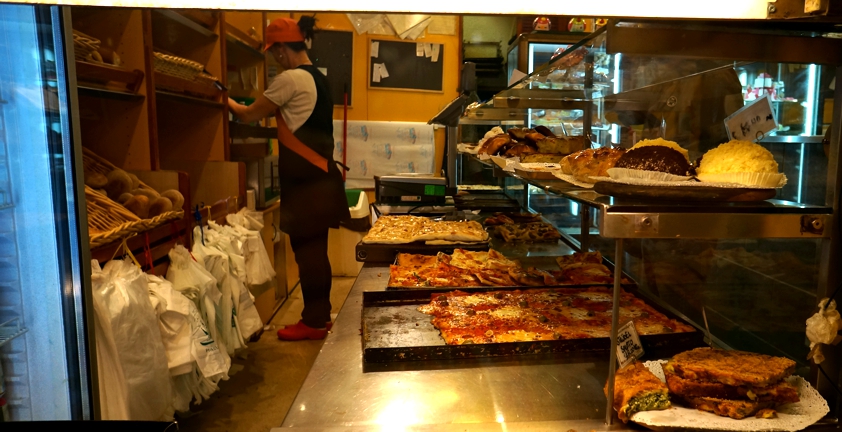
Focaccerie selling assorted focaccia and the typical farinata that this city is known for
Genoa’s flagship dish is the farinata – a thin pie of chick-pea (garbanzo bean) flour, olive oil water and salt, made in huge well-seasoned antique pans. Crisp on the underside, and moderately firm to the bite, it’s best advised to eat while fresh and hot. Since I’d read so much about this, I had high expectations, but was underwhelmed. It tasted rather like the batter for Indian vegetable fritters, minus the spices and herbs.
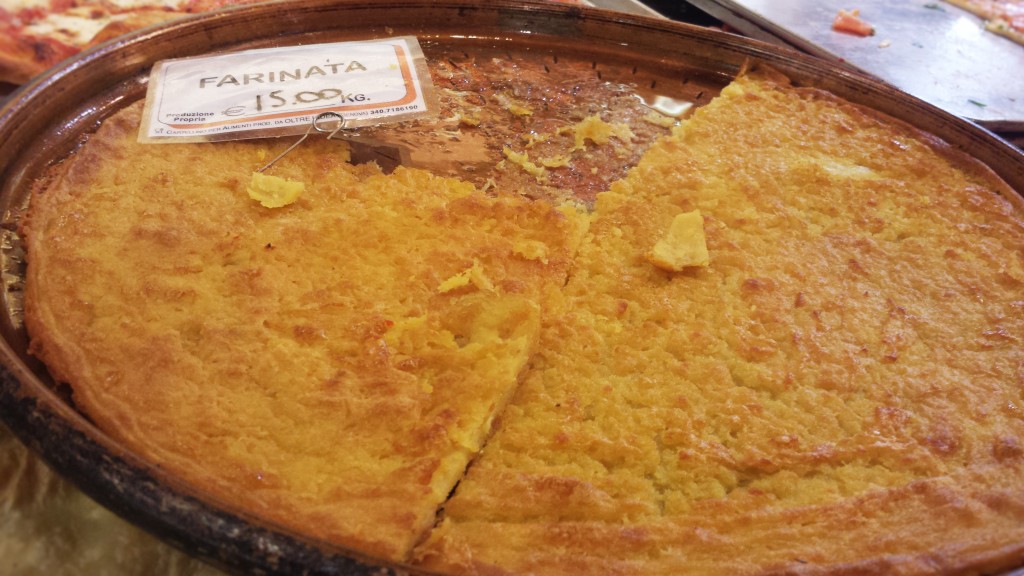
Farinata, a flat pancake made of chick-pea flour
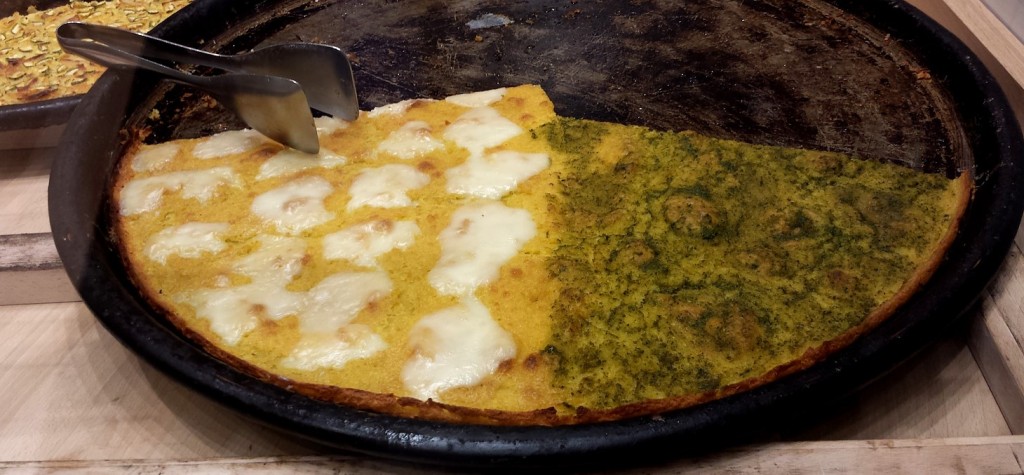
Farinata, with a choice of cheese or pesto
There’s no escaping carbs in Italy – if it’s not pasta, then it’s bread. Liguria is known for it’s focaccia – a type of flatbread made with olive oil and flour (See recipe). The distinct pock marks on the bread are made by bakers gently knuckling down the dough just prior to baking, thereby creating little wells for the olive oil and sea salt to nestle in. If topped, the toppings are kept simple – either rosemary or onions.
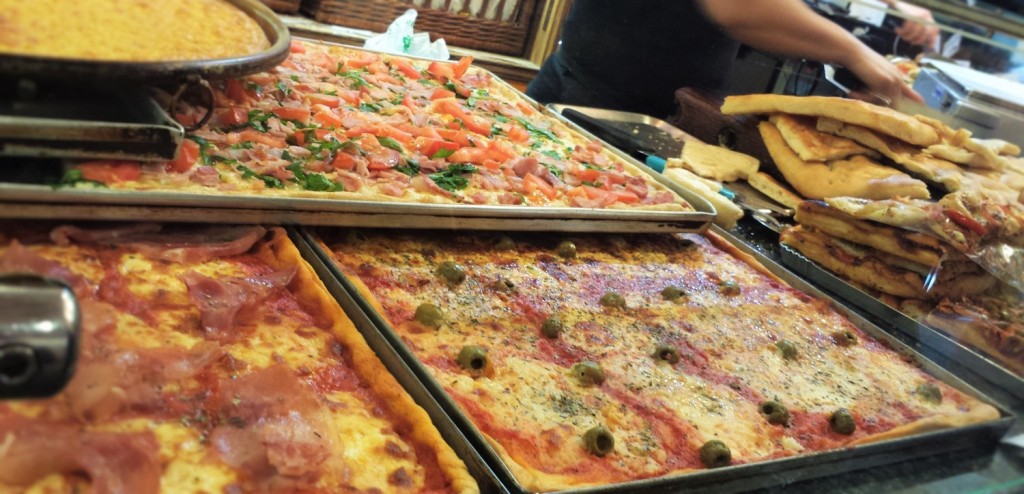
Freshly baked focaccia
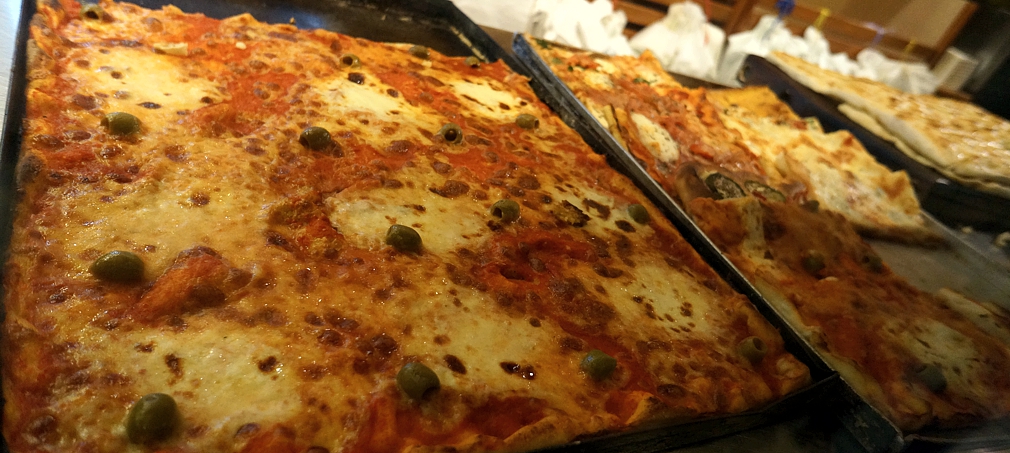
Freshly baked focaccia
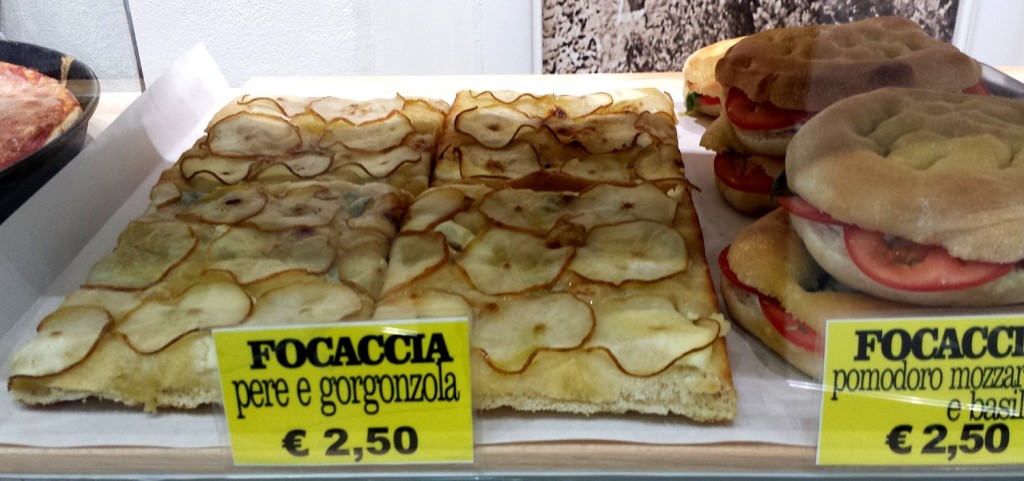
Pear & Gorgonzola foccacia
I think none of us can resist foods fried to a crisp – every nation and culture celebrates a ‘fry’ of sorts, and Italian cooks do this especially well. Fritto misto ( a mixed of fried items) can include vegetables (zucchini, eggplant, mushrooms, onions), fish or meat. And the seafood in Genoa was undoubtedly fresh. Since it was around lunch time, it was imperative we have another little bite at this pocket-sized friggitorie, packed to the gills with locals and office goers on their lunch break.
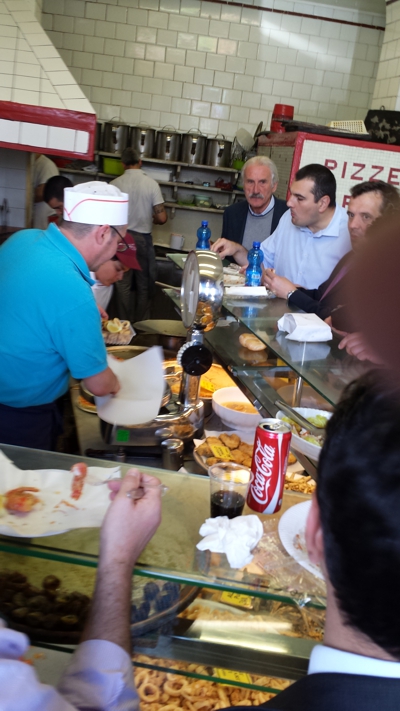
Friggitorie – selling an array of fried seafood and vegetables
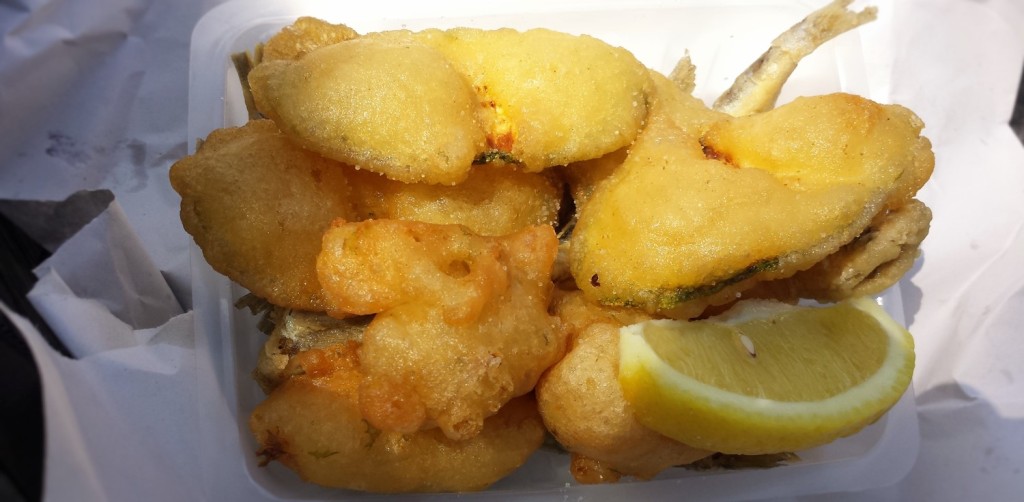
Fritto misto
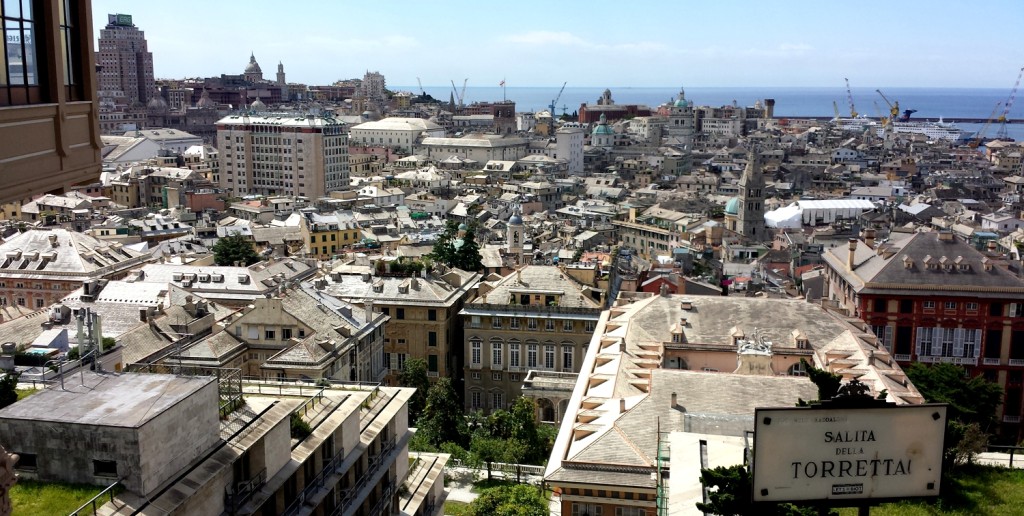
Genoa, Liguria
Ultimately it is the quality and freshness of the produce that makes food taste great. Locally produced and harvested, these were some of the seasonal vegetables available during our springtime visit to Italy in May, at the Mercato Orientale in Genoa.
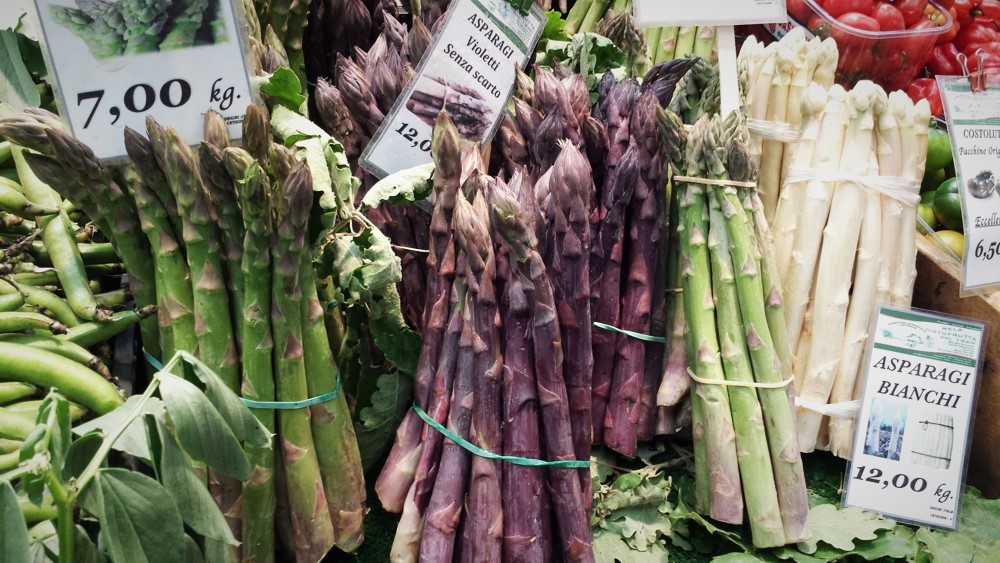
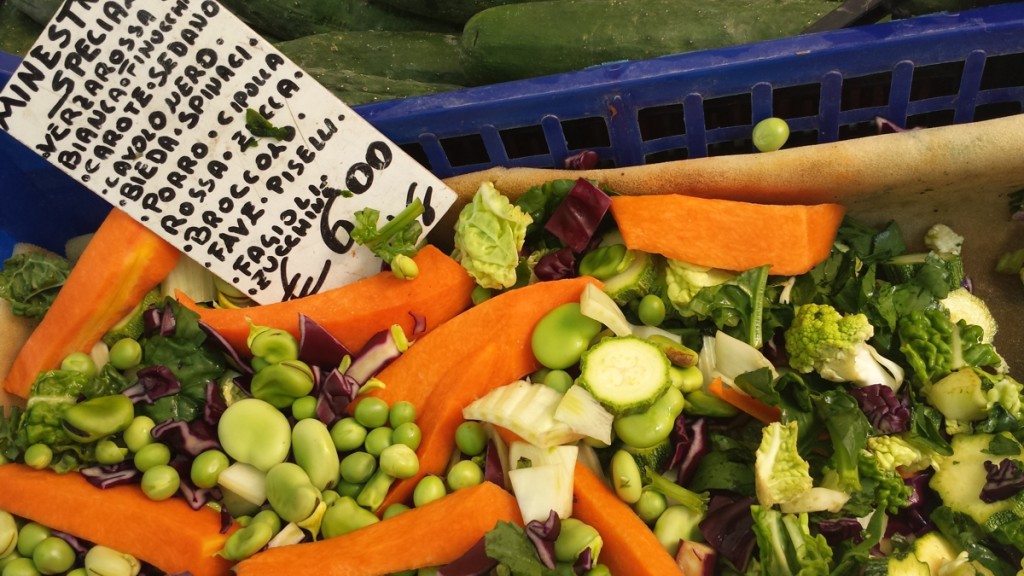
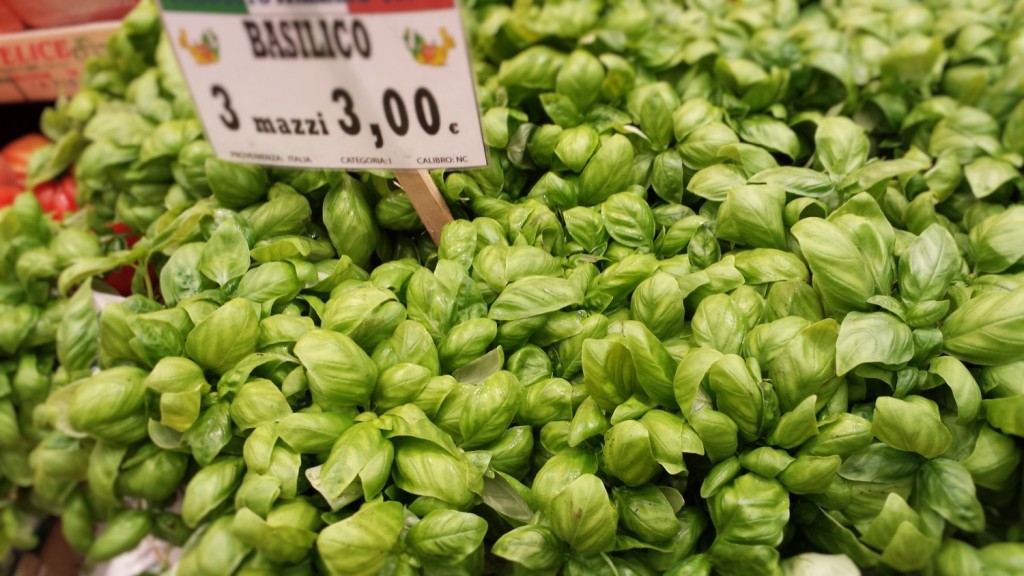
Genoa is also famously known for its pesto – made from sweet basil leaves, the shade-grown variety being the more desirable one.
